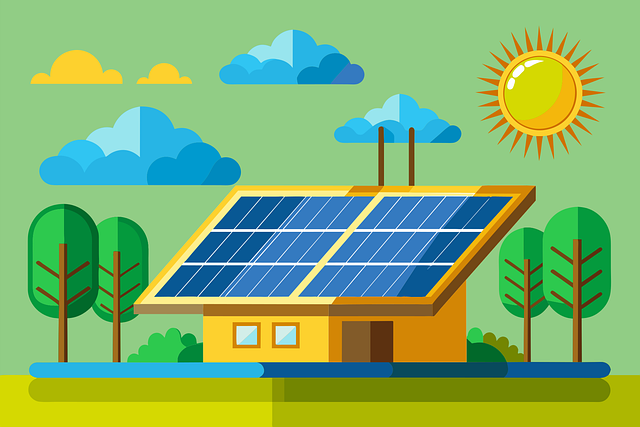“Stranded Wire: Flexibility and Durability for Optimal Solar Performance.”
Stranded wire is increasingly favored in solar installations due to its numerous advantages over solid wire. Its construction, consisting of multiple smaller strands twisted together, enhances flexibility and ease of handling, making it ideal for complex installations and tight spaces. Stranded wire also exhibits superior conductivity and resistance to fatigue, which is crucial for the dynamic conditions of solar applications. Additionally, its ability to withstand vibrations and thermal expansion reduces the risk of breakage over time, ensuring long-term reliability. These benefits contribute to improved performance, easier installation, and enhanced durability in solar energy systems.
Improved Flexibility and Maneuverability
In the realm of solar installations, the choice of wiring plays a crucial role in determining the overall efficiency and effectiveness of the system. Among the various types of wire available, stranded wire has emerged as a preferred option for many solar professionals, primarily due to its improved flexibility and maneuverability. This characteristic is particularly significant in the context of solar panel installations, where the ability to navigate tight spaces and adapt to various configurations can greatly enhance the installation process.
One of the most notable advantages of stranded wire is its construction, which consists of multiple small strands of wire twisted together. This design not only allows for greater flexibility compared to solid wire but also enables the wire to bend and twist without breaking. As solar installations often require routing wires around corners, through conduits, or in confined areas, the flexibility of stranded wire becomes an invaluable asset. Installers can easily manipulate the wire to fit the specific layout of the solar array, ensuring that connections are secure and that the overall system remains organized.
Moreover, the enhanced maneuverability of stranded wire contributes to a more efficient installation process. When working on rooftops or in other challenging environments, installers frequently encounter obstacles that necessitate quick adjustments. Stranded wire can be coiled, looped, or bent with minimal effort, allowing for swift modifications without the risk of damaging the wire. This adaptability not only saves time during installation but also reduces the likelihood of errors that could lead to costly rework or system inefficiencies.
In addition to its flexibility, stranded wire also offers improved performance in terms of electrical conductivity. The multiple strands create a larger surface area for electrical flow, which can result in lower resistance compared to solid wire. This characteristic is particularly beneficial in solar applications, where maximizing energy transfer is essential for optimizing system performance. By using stranded wire, installers can ensure that the energy generated by the solar panels is transmitted efficiently to the inverter and ultimately to the grid or battery storage.
Furthermore, the flexibility of stranded wire can also enhance the longevity of solar installations. Rigid wiring can be prone to fatigue and breakage, especially in environments subject to temperature fluctuations or physical movement. Stranded wire, on the other hand, is less susceptible to these issues due to its ability to flex and absorb stress. This resilience can lead to a longer lifespan for the wiring, reducing the need for maintenance and replacement over time. Consequently, this durability not only contributes to the reliability of the solar system but also offers peace of mind to both installers and end-users.
In conclusion, the benefits of using stranded wire in solar installations are manifold, particularly when it comes to improved flexibility and maneuverability. The ability to easily navigate complex layouts, coupled with enhanced electrical performance and durability, makes stranded wire an ideal choice for solar professionals. As the demand for renewable energy continues to grow, understanding the advantages of different wiring options will be essential for optimizing solar installations. By prioritizing flexibility and adaptability, installers can ensure that their systems are not only efficient but also resilient, paving the way for a sustainable energy future.
Enhanced Durability and Resistance to Fatigue

Stranded wire has emerged as a preferred choice in solar installations, particularly due to its enhanced durability and resistance to fatigue. This characteristic is crucial in environments where solar panels are exposed to varying weather conditions, temperature fluctuations, and mechanical stresses. Unlike solid wire, which can be more susceptible to breakage under strain, stranded wire consists of multiple smaller strands twisted together. This design not only provides flexibility but also allows the wire to better absorb and distribute stress, making it less likely to suffer from fatigue over time.
One of the primary advantages of stranded wire is its ability to withstand the rigors of installation and operation. In solar applications, wires are often subjected to bending, twisting, and vibration, especially in rooftop installations where movement can occur due to wind or thermal expansion. Stranded wire’s inherent flexibility enables it to endure these mechanical stresses without compromising its integrity. As a result, solar systems utilizing stranded wire can maintain optimal performance over a longer lifespan, reducing the need for frequent repairs or replacements.
Moreover, the resistance to fatigue offered by stranded wire is particularly beneficial in regions with extreme weather conditions. For instance, areas that experience high temperatures during the day and cooler nights can cause solid wires to expand and contract significantly. This thermal cycling can lead to micro-cracks and eventual failure. In contrast, stranded wire can accommodate these changes more effectively, as its multiple strands can shift and move independently, thereby minimizing the risk of damage. This resilience is essential for ensuring that solar installations remain operational and efficient, even in challenging climates.
In addition to its mechanical advantages, stranded wire also offers improved electrical performance. The multiple strands in stranded wire create a larger surface area for electrical conduction, which can lead to lower resistance and improved current-carrying capacity. This is particularly important in solar applications where efficiency is paramount. By reducing energy losses due to resistance, stranded wire can contribute to the overall effectiveness of the solar system, ensuring that more energy is harnessed and utilized.
Furthermore, the installation process for stranded wire can be more straightforward compared to solid wire. The flexibility of stranded wire allows for easier routing through tight spaces and around obstacles, which can be a significant advantage in complex solar installations. This ease of handling not only speeds up the installation process but also reduces the likelihood of damage during setup. Consequently, installers can complete projects more efficiently, leading to cost savings and quicker deployment of solar energy solutions.
In conclusion, the benefits of using stranded wire in solar installations are manifold, particularly in terms of enhanced durability and resistance to fatigue. Its ability to withstand mechanical stresses, adapt to thermal changes, and improve electrical performance makes it an ideal choice for solar applications. As the demand for renewable energy continues to grow, the advantages offered by stranded wire will likely play a crucial role in the longevity and efficiency of solar systems. By investing in high-quality stranded wire, solar installers can ensure that their systems are not only robust but also capable of delivering reliable performance for years to come. This commitment to quality will ultimately contribute to the broader goal of sustainable energy production and utilization.
Better Electrical Conductivity and Performance
When it comes to solar installations, the choice of wiring can significantly impact the overall efficiency and performance of the system. One of the most compelling options available is stranded wire, which offers several advantages over its solid wire counterpart. The primary benefit of stranded wire lies in its superior electrical conductivity, which is crucial for optimizing energy transfer from solar panels to inverters and ultimately to the grid or battery storage. This enhanced conductivity is primarily due to the multiple strands of wire that make up stranded wire, allowing for a greater surface area for electrical flow. As a result, stranded wire can reduce resistance and minimize energy loss, ensuring that more of the energy generated by solar panels is effectively utilized.
Moreover, the flexibility of stranded wire is another significant advantage that contributes to better performance in solar installations. Unlike solid wire, which can be rigid and challenging to maneuver, stranded wire is much more pliable. This flexibility allows for easier installation, especially in complex configurations or tight spaces where bending and routing are necessary. Installers can navigate around obstacles and make adjustments without the risk of damaging the wire, which can be a concern with solid wire. Consequently, this ease of handling not only speeds up the installation process but also ensures that the wiring is laid out in a manner that optimizes performance.
In addition to its flexibility, stranded wire also exhibits better resistance to fatigue and breakage. Solar installations are often subjected to various environmental factors, including temperature fluctuations and mechanical stress. Stranded wire, with its multiple strands, can better absorb these stresses without compromising its integrity. This durability translates into a longer lifespan for the wiring, reducing the need for frequent replacements and maintenance. As a result, solar system owners can enjoy peace of mind knowing that their installations are built to last, ultimately leading to lower long-term costs.
Furthermore, the improved electrical performance of stranded wire can lead to enhanced overall system efficiency. When solar panels generate electricity, it is essential that this energy is transmitted with minimal losses. Stranded wire’s superior conductivity ensures that more energy reaches the inverter, where it is converted for use. This efficiency is particularly important in larger installations, where even small losses can accumulate and significantly impact the system’s output. By choosing stranded wire, solar installers can maximize the energy harvested from sunlight, thereby increasing the return on investment for homeowners and businesses alike.
Additionally, stranded wire is often more resistant to corrosion, especially when coated with appropriate materials. This resistance is vital in outdoor installations where exposure to moisture and other environmental elements can lead to degradation over time. By utilizing stranded wire, installers can ensure that the wiring remains functional and efficient, even in challenging conditions. This resilience not only enhances the performance of the solar system but also contributes to its reliability, making it a wise choice for those looking to invest in renewable energy.
In conclusion, the benefits of using stranded wire in solar installations are manifold. From better electrical conductivity and flexibility to enhanced durability and resistance to environmental factors, stranded wire stands out as a superior choice for optimizing solar energy systems. By investing in this type of wiring, installers and system owners can ensure that their solar installations perform at their best, ultimately contributing to a more sustainable and efficient energy future.
Simplified Installation and Maintenance Processes
The adoption of solar energy has surged in recent years, driven by the need for sustainable energy solutions and the decreasing costs of solar technology. Among the various components that contribute to the efficiency and reliability of solar installations, the choice of wiring plays a crucial role. Stranded wire, in particular, has emerged as a preferred option for many solar projects, primarily due to its simplified installation and maintenance processes. Understanding the advantages of stranded wire can help installers and homeowners alike make informed decisions that enhance the overall performance of solar systems.
One of the most significant benefits of using stranded wire in solar installations is its flexibility. Unlike solid wire, which is rigid and can be challenging to maneuver, stranded wire consists of multiple smaller strands twisted together. This design allows for greater bending and twisting, making it easier to route the wire through tight spaces or around obstacles. As a result, installers can complete the wiring process more efficiently, reducing the time and labor costs associated with installation. Furthermore, the flexibility of stranded wire minimizes the risk of damage during installation, as it can adapt to various configurations without breaking or compromising its integrity.
In addition to its flexibility, stranded wire also offers superior conductivity. The multiple strands in stranded wire create a larger surface area for electrical flow, which can lead to improved performance in solar systems. This enhanced conductivity is particularly beneficial in installations where long runs of wire are necessary, as it helps to reduce voltage drop and maintain optimal energy transfer from the solar panels to the inverter and ultimately to the grid or battery storage. Consequently, using stranded wire can contribute to the overall efficiency of the solar system, ensuring that more energy is harnessed and utilized effectively.
Moreover, the maintenance of solar installations can be simplified through the use of stranded wire. Over time, solar systems may require inspections or repairs, and having accessible wiring is essential for efficient troubleshooting. Stranded wire’s flexibility allows for easier access to connections and junction boxes, enabling technicians to perform maintenance tasks without excessive disassembly or disruption. This ease of access not only saves time but also reduces the potential for damage to other components during maintenance activities. As a result, stranded wire can lead to lower long-term maintenance costs and increased system reliability.
Another important aspect to consider is the durability of stranded wire. Designed to withstand harsh environmental conditions, stranded wire is often coated with materials that provide protection against moisture, UV radiation, and temperature fluctuations. This resilience ensures that the wire maintains its performance over time, reducing the likelihood of failures that could necessitate costly repairs or replacements. By investing in stranded wire, solar installers can enhance the longevity of the entire system, ultimately benefiting the end-user.
In conclusion, the use of stranded wire in solar installations offers numerous advantages that contribute to simplified installation and maintenance processes. Its flexibility facilitates easier routing and reduces installation time, while its superior conductivity enhances system performance. Additionally, the ease of access for maintenance tasks and the durability of stranded wire further solidify its position as a preferred choice for solar projects. As the solar industry continues to evolve, understanding the benefits of stranded wire will empower installers and homeowners to make decisions that optimize their solar energy systems, ensuring a sustainable and efficient energy future.
Q&A
1. **Question:** What is a primary benefit of using stranded wire in solar installations?
**Answer:** Stranded wire is more flexible than solid wire, making it easier to route and install in tight spaces.
2. **Question:** How does stranded wire improve performance in solar applications?
**Answer:** Stranded wire has a larger surface area, which can reduce resistance and improve conductivity, enhancing overall system efficiency.
3. **Question:** What advantage does stranded wire offer in terms of durability?
**Answer:** Stranded wire is less prone to breaking under stress or movement, providing greater durability in dynamic environments.
4. **Question:** Why is stranded wire preferred for outdoor solar installations?
**Answer:** Stranded wire is better suited for outdoor use as it can withstand temperature fluctuations and mechanical stress without compromising performance.
Conclusion
Stranded wire offers several benefits in solar installations, including increased flexibility, improved resistance to fatigue and vibration, enhanced conductivity due to multiple strands, and easier handling and installation. These advantages contribute to more reliable and efficient solar energy systems, ultimately leading to better performance and longevity of the installation.



